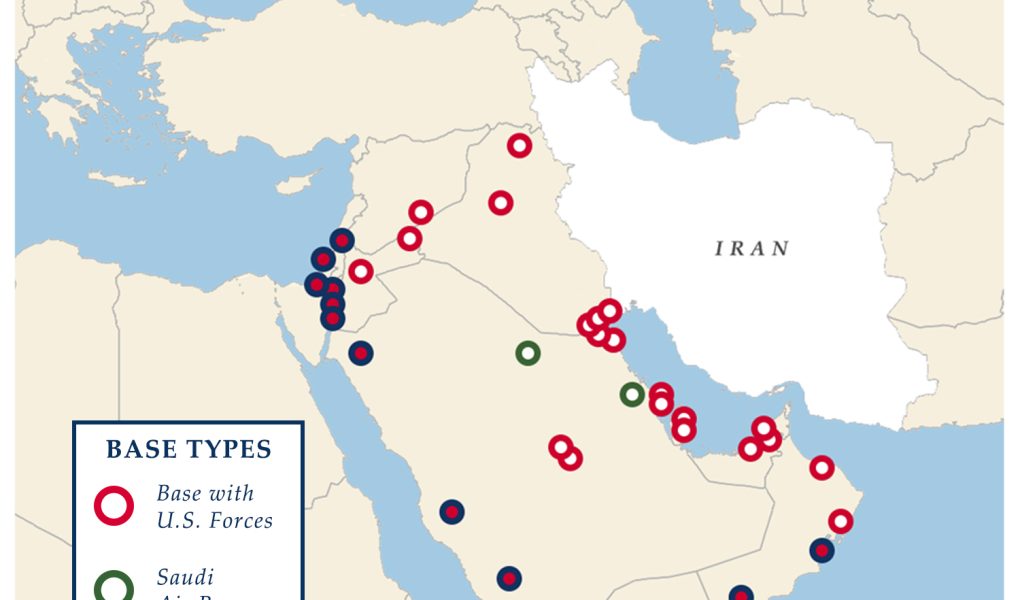JINSA is issuing a new report from its Hertog Distinguished Fellow and former CENTCOM Commander Gen Frank McKenzie, USMC (ret.) that lays out the risks inherent in America’s current basing structure in the Middle East, its vulnerabilities in a looming major conflict scenario with Iran, and steps the United States and its regional partners should take to address this strategic problem.
In any major conflict scenario with Iran, the central calculus will be the measurement of how long the Iranians could sustain a drone and missile bombardment of its neighbors, in the face of U.S. efforts to strike their launching systems and command and control facilities. Such a war would hinge largely on the American use of strike aircraft, tankers, and air and missile defense. However, U.S. strike aircraft in the Middle East are largely based at locations along the southern coast of the Arabian Gulf, exposing them, in the event of a conflict, to Iranian missiles that can reach them in a timespan of five minutes or less. This would be exacerbated by the fact that these bases’ refueling and rearming facilities are largely immobile and thus vulnerable to Iranian aerial attacks, which could override U.S. defenses at vital facilities along the Gulf.
The current geography of U.S. bases in the Middle East does not have to be its destiny, however. Working with its partners, this new report recommends the United States:
- Re-examine where U.S. military assets are based in the region, both on a day-to-day basis and on a contingency basis.
- Work with the Kingdom of Saudi Arabia, Jordan, Oman, and Egypt to identify bases as far to the west as possible where it can deploy aircraft, maintenance capabilities, refueling capabilities, and weapons.
- Relocate land-based air defenses, based on warning and indications of war, from their current locations along the Arabian Gulf to bases further west.
- Further capitalize on Israel’s 2021 shift from the European Command’s Area of Responsibility (AOR) to the Central Command’s AOR by examining Israel’s potential role in alternative basing structures.
- Continue to enhance air and missile defense cooperation with friendly Arab states, including working to forge an understanding of what sensor information to share and how to share it.
- Devote the necessary resources and craft messaging to deter Iran and its proxies from continuing to undertake deadly attacks across the region.
- Adopt a posture that allows the United States to rebase rapidly and frequently based on regional developments.
Click here to read the analysis.

